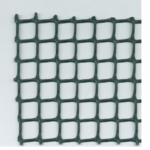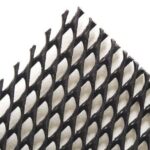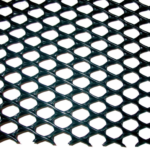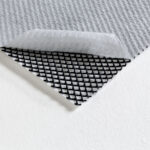Geonets








Previous
Next
We are engaged in supplying a wide range of drainage geonets that are used for the in-plane drainage capacity. These geonets have reasonable tensile strength and are used extensively in drainage applications. Geonets are generally offered in various technical specifications. Hence, these are frequently manufactured as multifaceted.
Geonets are comparable to grid materials and can be applied under geogrids. Its use here provides this feature, although it is not intended to isolate the area. Where geogrids are used as reinforcement, geonets are used to provide planar drainage. In this case, Geonets do not mean that they are frail and uneven materials, although they are not used for reinforcement purposes. Although they have a certain strength, they are generally used for drainage purposes.
Using geonets, geomembrane, or other material on the top or bottom of the material, they enter the ground’s voids and prevent the material from losing its drainage property. Therefore, they are used in the preparation of composite materials.
Applications Of Geonets
Prevent cracking
Used in the road construction
Construction of high load platforms
Fixing patchworks and potholes on the roads
Reinforcement is given to the joints in asphalt road
Serves as a layer to drain off the water behind retaining walls
Blanket for drainage beneath the surcharge fill, and the building foundation
Usage Areas Of Geonets
In sub-drainage systems under soil fillings.
Drain covers under surcharges.
For water drainage behind retaining walls.
For water drainage on frost-sensitive floors.
For water drainage under building foundations.
For the drainage of water leaking from the rocky slopes.
For water drainage under the sports fields.
For the drainage of dirty water under the motorways.
FAQ's
Geonets are a specialized segment within the Geosynthetic materials that are formed by a continuous extrusion of parallel sets of polymeric ribs at acute angles. Geonets are three-dimensional structures that are suitable for construction, erosion control, soil reinforcement, filtration, and separation between layers of materials. Geonets are used in place of soil drains in civil and environmental applications such as leak detection, gas venting, under-slab drainage, leachate collection, and as additional protection for waterproofing membranes. Geonets can be classified into bi-planar and tri-planar.
Ground reinforcement is the main reason geonets are used. Geonets empower the carrying potential of the current system due to the effects of friction and lock in the elements of structure or road.
1) Rockfall protection in Roads and Railways
2) Aquaculture
3) Canals
4) Tunnels
5) Effluent treatment plants
6) Reservoirs and Canals
2) Aquaculture
3) Canals
4) Tunnels
5) Effluent treatment plants
6) Reservoirs and Canals
Bi-planar Geonets
– They are made up of two sets of HDPE strands connecting at different angles to form a diamond-shaped pattern.
– This configuration has high tensile strength and enables large fluids and gas flow.
– They are best suited for all drainage applications.
– They are used in containment ponds as a leak detection layer and can also be used in landfill caps and cells.
Tri-planar Geonets
– They are made of centered middle HDPE strands with diagonally positioned top and bottom strands to prevent geotextile infiltration.
– To allow larger flow capacity, these geonets have stronger stiffness, tensile strength, and compressive resistance.
– They are best suited for applications such as pavement systems, highways, railway roads, and concrete building slabs that require drainage under high loads.
– They are used in landfill cells that require transmissivity during high loads.
– They are made up of two sets of HDPE strands connecting at different angles to form a diamond-shaped pattern.
– This configuration has high tensile strength and enables large fluids and gas flow.
– They are best suited for all drainage applications.
– They are used in containment ponds as a leak detection layer and can also be used in landfill caps and cells.
Tri-planar Geonets
– They are made of centered middle HDPE strands with diagonally positioned top and bottom strands to prevent geotextile infiltration.
– To allow larger flow capacity, these geonets have stronger stiffness, tensile strength, and compressive resistance.
– They are best suited for applications such as pavement systems, highways, railway roads, and concrete building slabs that require drainage under high loads.
– They are used in landfill cells that require transmissivity during high loads.
